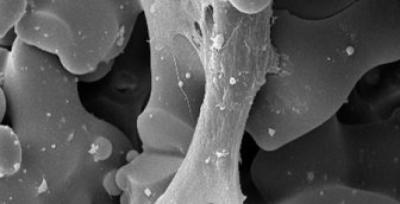

by Joe Battaglia, PreventDisease.com
Mercury amalgam fillings are now a well known toxicity to the body of both dental patients and dentists themselves. Specific resin composites used now by many dentists are safer, however insufficient research has been able to validate long-term health implications. Engineers have made some promising findings about the ability of 'bioactive' glass which may be not only the safest of the three, but perhaps even provide some of the minerals needed to replace those lost to tooth decay.
It will be noted that most of the 170,000 dentists in this US who work with amalgams do not think exposure to dental mercury causes any harm what-so-ever. And why should they since they were taught in dental school that amalgams don't release mercury.
The film You Put What In My Mouth? explores why dentists are unaware of manufacturer warnings and the elevated exposures during these routine dental procedures.
Accelerated and ground-breaking research on a new type of material means we are just a few years away from millions of people around the world who might be able to walk around with an unusual kind of glass in their mouth, and using it every time they eat.
Due to its superior mineral enrichment efficacy, our bioactive glass can add supplementary therapeutic and prophylactic effects to dental filling composites without long-term health risks.
Bioactive glass is a group of surface reactive glass-ceramic biomaterials that have now been extensively investigated for use as implant materials in the human body to repair and replace diseased or damaged bone.
Prolonging the life of composite tooth fillings could be an important step forward for dental treatment, the researchers say, since more than 122 million composite tooth restorations are made in the United States every year. An average person uses their teeth for more than 600,000 "chews" a year, and some studies suggest the average lifetime of a posterior dental composite is only six years.
Bioactive glass polymer hybrids are being synthesized that have the potential to be tough, with congruent degradation of the bioactive inorganic and the polymer components.
The new research was just published in the journal Dental Materials, in work supported by the National Institutes of Health.
"Bioactive glass, which is a type of crushed glass that is able to interact with the body, has been used in some types of bone healing for decades," said Jamie Kruzic, a professor and expert in advanced structural and biomaterials in the OSU College of Engineering.
"This type of glass is only beginning to see use in dentistry, and our research shows it may be very promising for tooth fillings," he said. "The bacteria in the mouth that help cause cavities don't seem to like this type of glass and are less likely to colonize on fillings that incorporate it. This could have a significant impact on the future of dentistry."
Bioactive glass is made with compounds such as silicon oxide, calcium oxide and phosphorus oxide, and looks like powdered glass. It's called "bioactive" because the body notices it is there and can react to it, as opposed to other biomedical products that are inert. Bioactive glass is very hard and stiff, and it can replace some of the inert glass fillers that are currently mixed with polymers to make modern composite tooth fillings.
"Almost all fillings will eventually fail," Kruzic said. "New tooth decay often begins at the interface of a filling and the tooth, and is called secondary tooth decay. The tooth is literally being eroded and demineralized at that interface."
Bioactive glass may help prolong the life of fillings, researchers say, because the new study showed that the depth of bacterial penetration into the interface with bioactive glass-containing fillings was significantly smaller than for composites lacking the glass.
Fillings made with bioactive glass should slow secondary tooth decay, and also provide some minerals that could help replace those being lost, researchers say. The combination of these two forces should result in a tooth filling that works just as well, but lasts longer.
Recently extracted human molars were used in this research to produce simulated tooth restoration samples for laboratory experiments. OSU has developed a laboratory that's one of the first in the world to test simulated tooth fillings in conditions that mimic the mouth.
If this laboratory result is confirmed by clinical research, it should be very easy to incorporate bioactive glass into existing formulations for composite tooth fillings, Kruzic said.
The antimicrobial effect of bioactive glass is attributed, in part, to the release of ions such as those from calcium and phosphate that have a toxic effect on oral bacteria and tend to neutralize the local acidic environment.
"My collaborators and I have already shown in previous studies that composites containing up to 15 percent bioactive glass, by weight, can have mechanical properties comparable, or superior to commercial composites now being used," Kruzic said.
Sources:
oregonstate.edu
http://preventdisease.com/news/15/122315_Bioactive-Glass-Future-of-Dental-Fillings.shtml


Comments
Very Interesting
Sounds Great, but I think it would take many years to accurately gauge long-term effects that
Might have secondary impacts on th body.